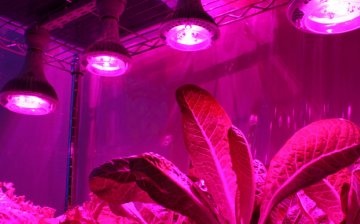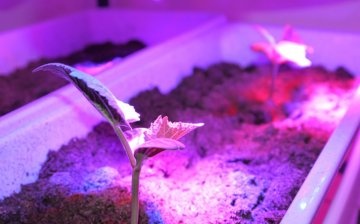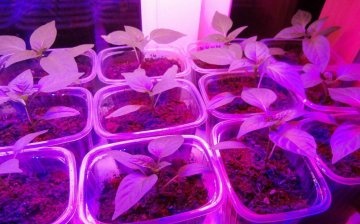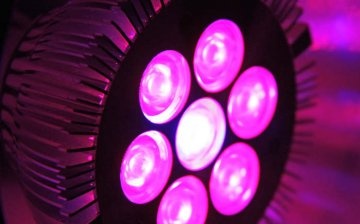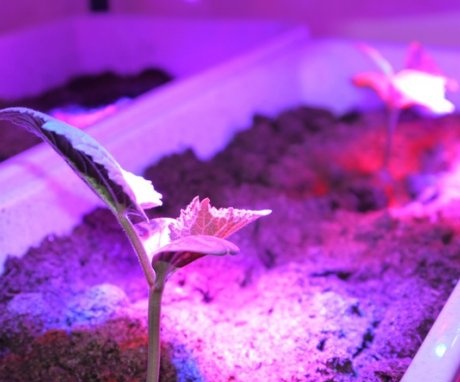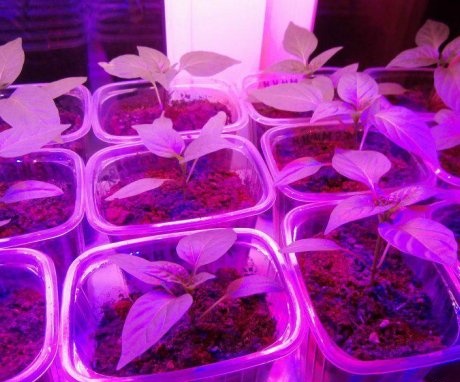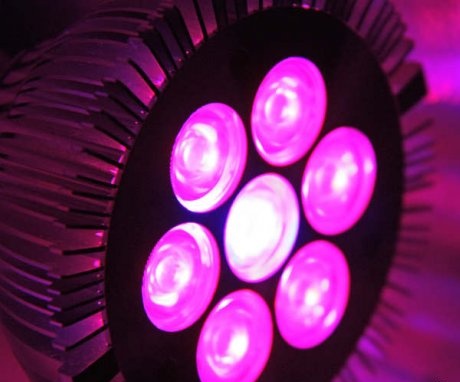Fitosvet D - the most convenient phytolamp for growing plants
Fitosvet D is a kind of modern LED lamp for growing plants at home or in greenhousese. These luminaires use special LEDs to provide plants with the right amount of light.
Content:
Lamp description, pros and cons
Phytolamps can be used for additional lighting in the winter season, when there is not enough light, or as a separate full-fledged light source without using natural light.
The advantages of these lamps include:
- High efficiency, which allows you to reduce energy costs.
- They are quite safe, environmentally friendly, do not contain mercury and do not emit any harmful substances.
- LED phytolamps practically do not heat up, which allows them to be placed close to the leaves without fear of burns.
- This is useful for multi-tiered designs with flowers.
- Lamps do not heat or dry the air in greenhouses.
Fitosvet D for plants will last a long time, not one year. The lamp is not cheap, but it will pay off in a few years due to harvest and energy savings. For greenhouses large size will have to spend a lot of money to ensure sufficient lighting.
With a filolamp, you can not be afraid of voltage drops. They also have a directional light, it is not scattered and is directed exclusively to the plants.
Simplicity of installation is also an important advantage. No need to buy additional equipment, wires, sockets.
The disadvantages of some users include the price, as well as the danger of buying a low-quality lamp that will quickly fail. The pinkish light emitted by lamps is good for plants, but not for humans. It irritates the eyes and can cause headaches. For this reason, you should not stay in a room with such light for a long time or use a mirror reflector if the lamp is used in an apartment.
Fitosvet D has several types. It is possible to combine lamps in such a way that the efficiency of plant development is maximized. The lamps have a blue and red spectrum of illumination. Blue has a smaller range and is used to illuminate plants during active growth. Red spectrum with a large range contribute to flowering and ripening of fruits. They can be used together.
Operating rules
Lamps are attached with chains directly above the plants. If necessary, the length of the chain can be adjusted by lowering and raising the luminaire to the desired level. Rigid mounts are rarely used. In this case, it is worth considering the heating of the fastener material. If the materials of the body and the fixture have different heating temperatures, it may deform the lamp and cause it to break.
Fixing Fitosvet D is quite convenient, you can provide the desired level of illumination.
It is not recommended to cover the lamp housing to avoid overheating. The aluminum housing is used to dissipate the generated heat. Therefore, do not cover it with cloth or other materials.
A feature of the LED lamp is that the light comes in separate spots, therefore, when positioning the lamp, it is worth considering this fact and placing the light source in such a way that the illumination is uniform.
Lamp location:
- The lamp should be placed at a distance of about 50 cm from the shelf level if the plants are low, and 20-30 cm for tall ones. plants.
- In this case, the lamp should not go beyond the edges of the rack, otherwise the light will be wasted. Hang the luminaire 10 cm further from the edge, then the light distribution will be optimal.
- Reflectors can be installed side by side to reduce light loss.
- The light should be directed perpendicular to the leaves.
It is believed that placing the lamp closer to the plant will give the best effect, however, it is important to prevent the leaves from overheating. The light must be directed exactly at the plants. The phytolamp operation does not differ from the operation of other lighting devices. There shouldn't be any difficulties during use.
The lamp must be turned on for 12-14 hours and then turned off.
Do not leave the lamp on all the time. Plants need some time in the shade for normal growth and development. When positioning the light source, the lighting needs of the plants should be taken into account. They need to be distributed in such a way that shade-loving plants stand separately from light-loving ones. The power and number of lighting fixtures are calculated according to the same principle.
Varieties and features of phytolamps
Fitosvet D for home is an LED light source. LEDs are considered the most economical and safest light source. They emit the most light, while practically not heating up.
However, there are other types of phytolamps:
- Incandescent lamps. The most common familiar lamps. They consume a lot of energy, quickly fail and heat up, but among their advantages is a low price. For plants that do not require a lot of constant light, these bulbs can be useful, but incandescent light is not suitable for most plants.
- Mercury. Mercury lamps are used quite often for photosynthesis. They require compliance with certain rules, but they consume little electricity, are efficient to use, and serve for a long time. Many gardeners are put off by the fact that the lamp uses mercury, which is a toxic substance. Damage to the lamp can lead to various problems, damage harvestspoil the soil. In addition, mercury lamps cannot simply be thrown into the garbage chute, they must be handed over to special disposal points. Over time, these lamps lose their effectiveness, and the light flux decreases.
- Luminescent. Mercury is also used in fluorescent lamps, which requires extra care when handling. They emit more light and less heat than incandescent bulbs, but they are much more expensive. Over time, the amount of light emitted decreases. Such lamps will require additional devices and equipment to be used most effectively.
- Sodium. These lamps emit a red spectrum of light, which is especially useful for plants... They are very effective, long lasting, do not consume much energy, accelerate flowering and increase yields. However, these lamps will require additional devices. They are also recommended to alternate with other types of phytolamps.
The use of phyto lamps allows you to use not only windowsills for growing plants in an apartment and a house. With their help, it is possible to provide the desired level of illumination even for the most light-loving crops.
More information can be found in the video.



